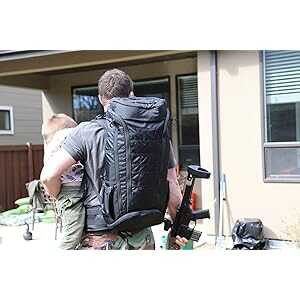
The only way to get better is through practice. There are no shortcuts. If you wan to shoot like an operator, you have to practice like one.
Nobody wants to hear about the hard work involved with learning to shoot, but that is what is required. Not one person is born with the ability to shoot well. It is a learned behavior. And dry fire is a big part of that.
Dry fire is a great training tool. It improves your fundamentals, everything from grip to trigger control, and refines your body mechanics provided you do it correctly.
The video below shows you the basics of how to start. To keep things in perspective, even when I was shooting 1,000 rounds of live fire each day, I was dry firing for two to three hours per night. It is that important.
It doesn’t have to be boring, you can make your dry practice as engaging as you like. If you are a competitive shooter, a great option is to set up classifier stages. If you are a tactical shooter, you can use magazine pictures. Get real frisky and recreate famous movie scenes,; see if you can learn to shoot them as fast as the Hollywood heroes on film. The sky is the limit.
Dry fire is free, and it’s something you should take advantage of. How about instead of re-watching that episode of Seinfeld you’ve seen 30 times or instead of watching grown-ass men play with a kids’ ball in the National Felons League for three hours this weekend, you spend some time improving your shooting game. No fancy tools are required. About the only thing I buy extra is mini USPSA targets from the Ben Stoeger Pro Shop, and I only have to buy them once.
Are you going to hurt your gun by dry firing it? No, you are not. The only exceptions are some rimfires and cowboy action guns. I did manage to break a lever-action firing pin in one night of practice, but if you shoot that sport you already know the drill. A modern gun, even a 1911, is going to be just fine.
This weekend, I highly recommend you set up a dry fire corner and get after it. You will see your skills improve, I guarantee it.



outfuckingstanding Marine, comm up when you get a chance
Hi Clay. Way to go! You are preaching our motto, “Practice Better, Shoot Better.” Your students that are Glock or S&W shooters might find the DRYFIREMAG very useful. Please check it out at DRYFIREMAG.COM and let us know what you think.
Happy Dryfiring!
Gary
Makes perfect sense and you cannot beat the price. Haven’t been doing it daily but will now. Thanks!
I have the same question regarding mag drop and reload. I do a point to left because it’s physiologically comfortable to press the release with my wrist cocked that way. Good, bad, indifferent?
Love the safety aspect.
Thanks for all you do Mr. Martin
Great video! Your wife is looking for her laundry basket. Thanks again for the reviews!
Let me echo, nice job Clay!
You spent half the video on safety, well done!
Way too many accidents from people saying “I didn’t know the gun was loaded”.
Know thy gun know thy self.
Mr. Martin,
Excellent flick, especially the safety tips some of which I had not thought of.
As a target shooter, I recently got back into dry fire practice because of my deteriorating performance with pistols at 25 yards on plates.
I like your idea of filming yourself, while dry firing, so you can self-correct obvious mistakes you are making.
At the range during live fire, we have some ROs (if they have time) that are very good at providing feedback that you can take back to your dry fire sessions to firm up.
For a follow up article, please consider incorporating the MantisX trigger training system in your options for dry fire and live fire feedback
I have no association with MantisX, other than purchasing their product commercially and aggravating the hell out of their, most excellent, customer support about things “I” was doing wrong when mounting the device or setting up the application.
I have noticed that the dry fire trigger training, using the system, transfers to live fire training with the extra, reinforcing feedback of dropping a plate if your score is 85 or above.
If your score is 85 or above and the plate does not drop, your POA was off.
And I think it makes the dry firing more interesting and challenging.
Everyone needs to read “Good shot” every now and then!
Regards,
Matt
Why do you point your weapon away from the target (sometimes to the left and sometimes to the cieling) when you reload? It means that you have to reacquire the target each time. Why do you look at your holster when you are reholstering your weapon? It’s still in the same place it was. And it could be dark. Wouldn’t it be better to pactice reloading with the weapon still pointed at the target and also practise reholstering without looking at the holster?
Did you really just regurgitate internet nonsense on a guy that’s actually lived the life and survived?
Scott Salyer… I lived the life as well and survived. Dave Bateman, has legitimate questions. Why does he point the gun in different directions… and looks for his holster. The question did not have anything to do with living the life and surviving… it has everything to-do with technique. Scott Salyer… Grow Up!!
Clay… very informative video… thank you. Semper Fi.
Love your articles Clay. No nonsense, to the point, and funny. Great writing style. Keep up the great work.
Is that a poster of Saint Mattis on the wall?
You know it is. How we roll.
Got the same pic of St. Mattis on my desk, pray to it daily… Semper Fi